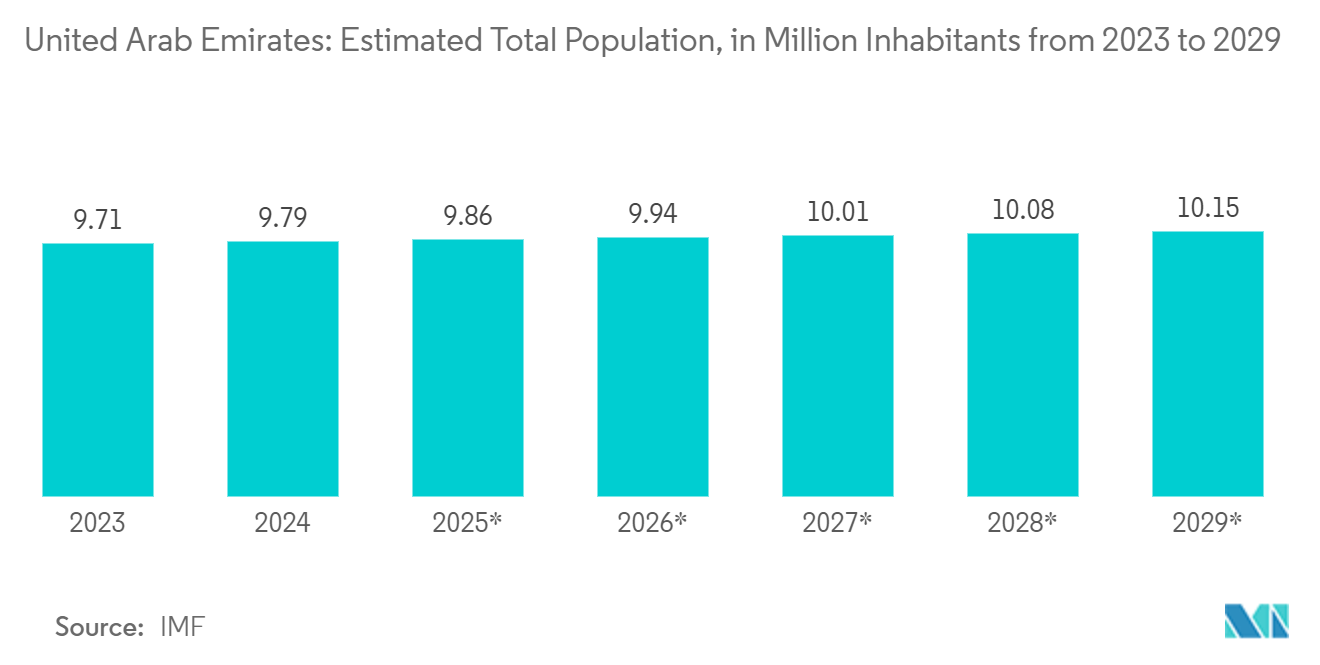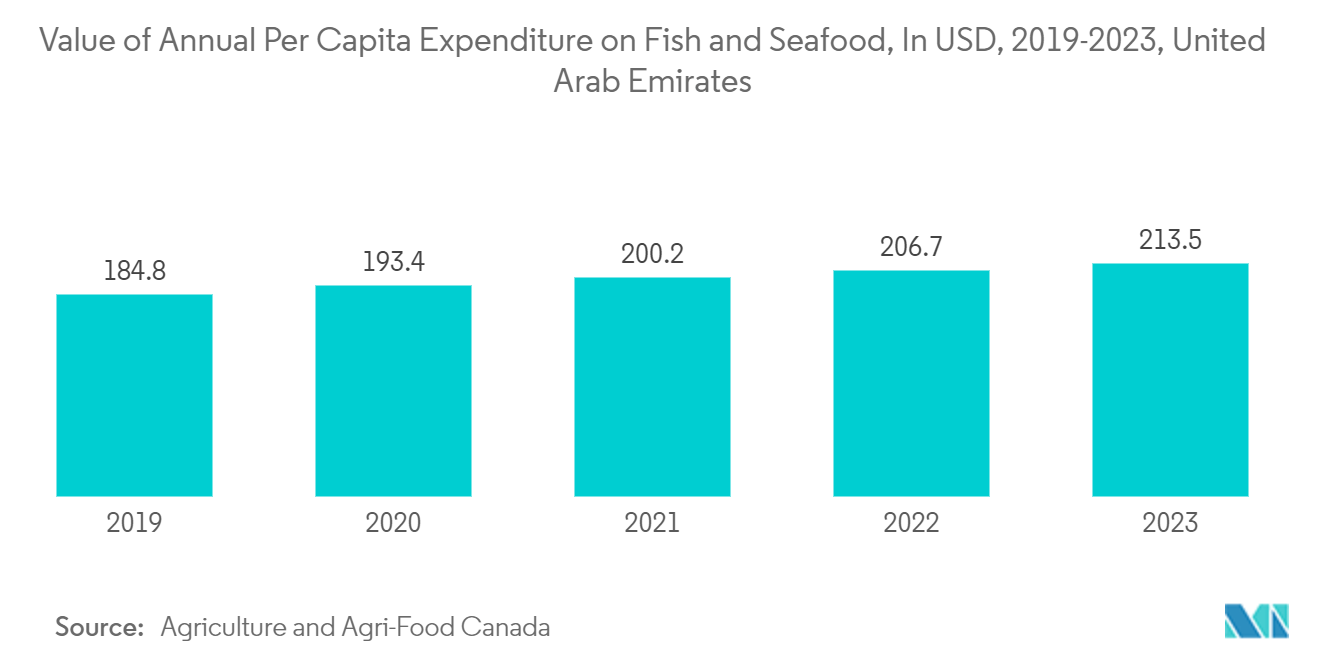Market Trends of MEA Food Cans Industry
Aluminum Cans Expected to Gain Largest Market in the Region
- The growing population in the region, According to IMF population of the United Arab Emirates (UAE) by 2029 would be approximately 10.15, million inhabitants in the UAE. which leads to increasing food consumption, leading to the growth in the packaging of processed food in aluminum cans. The region is witnessing significant change in the food industry, with the market accounting for approximately 5% of the global consumption of packaged foods. The region has become a growing market for the industry, driving it to adopt new packaging and processing technologies.
- The Kingdom of Saudi Arabia (KSA) and the United Arab Emirates (UAE) are expected to be the region's significant and fastest-growing food processing markets. There is demand for convenience products due to higher disposable incomes and a need for more time for cooking. This has increased the need for frozen food products and high-quality foods. Such demand for food products drives the market for aluminum food cans in the region.
- Similarly, Middle Eastern countries are popular for hummus, which is a dip, spread, or savory and becomes one of the staples in the region. Many manufacturers, such as Cortas, Durra, and Ziyad, prefer aluminum metal cans for longer shelf life, increasing the demand for aluminum metal can packaging.
- From the manufacturing end, the local vendors in the market also witness growth in demand for food cans. For instance, Nampak Ltd., a South African metal can manufacturer, experienced an increase in its DivFood metal can (mainly aluminum) packaging, contributing to the overall growth in revenue. According to the company, in South Africa, the performance improved as food can demand increased while demand for diversified cans was in line with expectations.
- According to ITA and the US Census Bureau, fresh and frozen fish imports from the middle of 2022 were 29.96 million. Therefore, the region is also witnessing increased consumption of ready meals, frozen food such as seafood, and more products, and their packaging in cans ensures a greener environment and reduces the use of plastics on the shelves.

United Arab Emirates Anticipated to Register Fastest Growth
- The idea of living in the United Arab Emirates is one of the highest in the world. A liberal, business-friendly, and market-oriented growth strategy has reshaped the economy. Foreign citizens make up around 80% of the total population and are mainly responsible for the rapid gains in population. However, almost all immigrants are young or middle-aged adults, and their presence ensures a relatively high median age. The UAE is the central regional trade hub for the Middle East and North Africa due to its favorable geographic location and modern infrastructure.
- The UAE is also a member of the Pan-Arab Free Trade Agreement (PAFTA), which has eliminated nearly all tariffs among its signatories, and a founding member of the GCC. The market is highly competitive, but the studied market has significant potential for U.S. export growth, including dairy products, prepared food, fresh fruit, poultry, tree nuts, and beef products.
- Emirates Global Aluminium, one of the giant industrial companies in the United Arab Emirates and leading can-makers and waste management companies, announced the launch of the Aluminium Recycling Coalition, which aspires to drive a step-change in aluminum recycling in the UAE. The Aluminium Recycling Coalition aims to boost aluminum recycling by UAE consumers.
- According to USDA, the United Arab Emirates food processing sector extends due to substantial public and private sector investments, low regional tariffs, and a suitable geographic location bolstered by superior infrastructure. There are over 568 food processors and manufacturers in the UAE, small to medium size. The food processing sector provides UAE demand and is focused on meeting needs regionally and worldwide. These firms depend entirely on imported ingredients due to the UAE's low production of intermediate, commodity, and lightly processed agricultural products. Significant opportunities exist for U.S. companies to expand their business in this growing sector of the UAE economy.
- Further, according to the government of Canada, the UAE is a net importer of fish and seafood, and the country imports up to 90% of its food consumption. The value of annual per capita expenditure on fish and seafood in the region was USD 206.7 in 2022 and is expected to reach USD 213.5 in 2023. All the above factors drive the market for food cans in the region over the forecast period.


